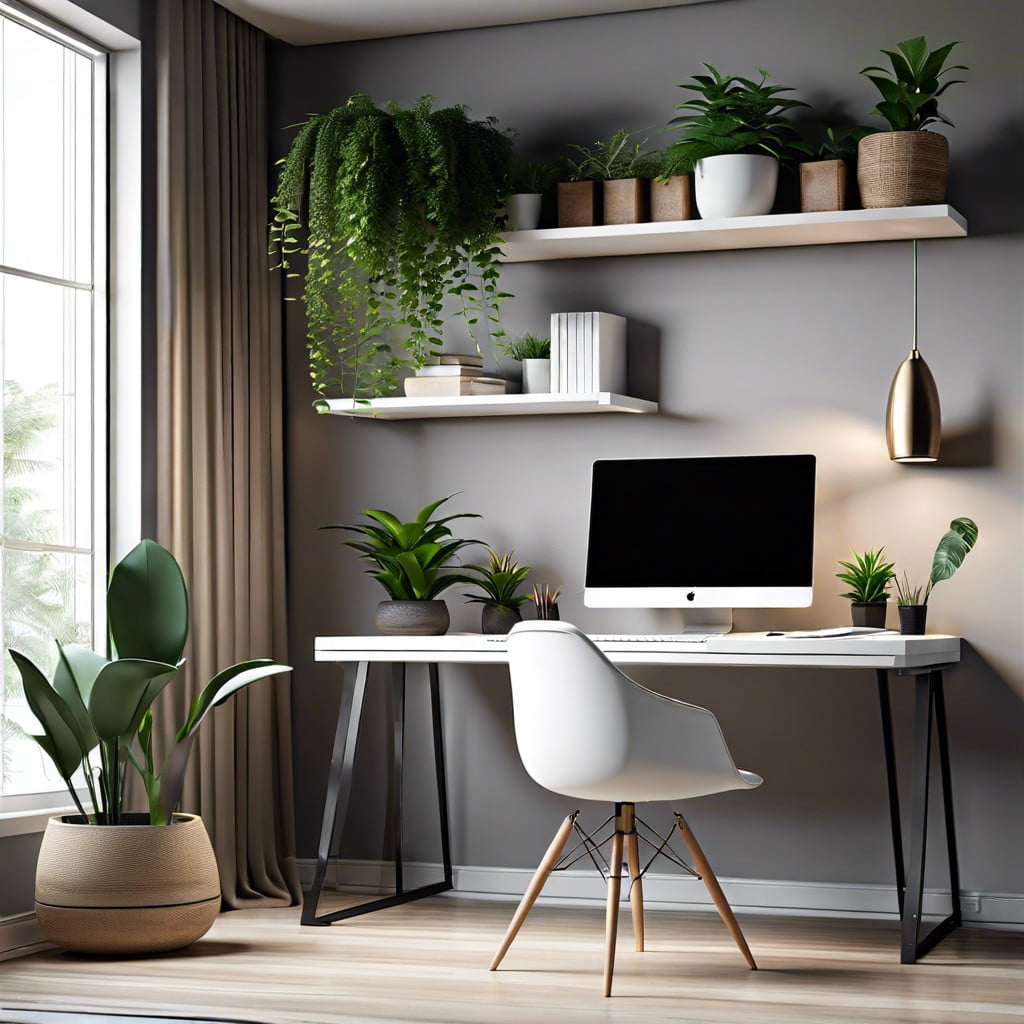Last updated on
Discover practical tips on how to declutter your home office for a more productive workspace.
Key takeaways:
- Envision your goal: Determine purpose, create zones, prioritize accessibility, consider aesthetics.
- Remove everything and assess each item: Sort into keep, recycle, donate, trash.
- Use dividers and shelves wisely to organize: Group similar items, elevate equipment, label everything.
- Develop stronger organizational habits: Schedule regular upkeep, prioritize digital decluttering, practice one-in, one-out rule.
- Maintain a routine to keep your space decluttered: Set aside specific time, use labels, limit incoming clutter, clear digital clutter.
Table of Contents
Envision Your Goal

Before diving into the chaos, picture your ideal workspace. Think about what you need within arm’s reach and what can be stored away. Imagine walking into your office and feeling a sense of calm and control.
– Purpose clarity: Determine the primary function of your home office. Is it for work, study, or creative projects? This understanding directs the organizing process.
– Zone creation: Think in terms of zones such as a work zone, a reference zone (for files and books), and a supply zone. Each area should support its intended function without overlapping too much.
– Accessibility: Plan to keep frequently used items close by. Less used items can be stored or filed away to minimize clutter.
– Aesthetics: Consider how the environment affects your mood and productivity. A pleasing color scheme and strategic lighting can make a big difference.
Visualizing the end result not only motivates but also guides your decluttering efforts, ensuring you create a space that truly enhances your productivity and joy.
Remove Everything and Assess Each Item
Begin by extracting every item from your desk, drawers, and shelves. It’s like a magic trick where everything must disappear before the grand reveal! Place everything in a clear space where you can easily see them. This move might temporarily increase the chaos, but it’s a crucial step toward order.
Examine each item critically. Ask yourself, “Do I use this regularly? Does it contribute to my productivity?” If the answer leans toward “No,” it’s a candidate for removal. Be ruthless but thoughtful; it’s about keeping what’s essential and saying goodbye to the dust collectors.
Sort everything into categories: keep, recycle, donate, and trash. This simplifies the decision-making process and saves your brain from clutter fatigue. Remember, every item you decide to keep should have a clear purpose and a designated spot in your office. This systematic purging sets the stage for a workspace that enhances productivity, not hinders it.
Use Dividers and Shelves Wisely to Organize
When considering the layout of your home office, think of dividers and shelves as your best allies in the war against clutter.
Start with dividers. These handy organizers can transform a chaotic drawer into a neatly sorted treasure chest. Group similar items together—pens with pens, sticky notes with sticky notes. It’s like creating a little home for every tool, ensuring they’re easy to find and hard to mess up.
Now, for the shelves: they’re not just for books. Use them to elevate your office equipment—scanners, printers, or routers. This frees up valuable desk space and keeps your technology dust-free. Adjustable shelves? Even better. They morph to fit your stuff, not the other way around.
Lastly, label everything. Yes, everything. When each shelf and divider has a clear label, you avoid the all-too-common pile-up of ‘miscellaneous’ items that really belong elsewhere. Plus, it’ll save you from playing the guessing game every time you need to find something.
In the world of home office decluttering, dividers and shelves do more than just store—they streamline your workspace for peak performance.
Develop Stronger Organizational Habits
Transforming your relationship with clutter begins with forming new, sustainable habits. Start by scheduling a short daily or weekly session dedicated to office upkeep. This could be as simple as a 10-minute tidy-up at the end of each day or a deeper clean each Friday afternoon.
Next, prioritize digital decluttering. Regularly clean out your email inbox and desktop files. This not only frees up digital space but helps reduce mental clutter, making you more efficient and less stressed.
Consider implementing the one-in, one-out rule: for every new item you bring into your office, one old item must leave. This practice helps maintain balance and prevents the accumulation of unnecessary items.
Lastly, make a habit of questioning the necessity of each item before it enters your office space. If it doesn’t serve a purpose or bring you joy, perhaps it doesn’t belong in your workspace.
By embedding these habits into your routine, maintaining an organized office becomes less of a chore and more of a natural part of your day.
Maintain a Routine to Keep Your Space Decluttered
Consistency is key to avoiding a relapse into chaos. Set aside a specific time each week to review and reorganize your space. This could be a quick 10-minute tidy-up every Friday before you log off or a more thorough organization session once a month.
Labeling is your friend. Use labels to mark shelves, drawers, and folders. This not only reminds you where things go but also makes it easier for you to decide what belongs in your workspace and what does not.
Limit incoming clutter. Before new items make their way into your office, question their utility. If they don’t serve a specific, immediate purpose, they probably belong elsewhere.
Finally, keep digital clutter in check as well. Regularly clear your desktop, organize digital files, and unsubscribe from unnecessary emails. Just like physical clutter, digital disarray can distract and hinder your productivity.




